Whether you’re looking for wood to burn in a fireplace, wood stove or backyard fire pit, here’s what to keep in mind before you buy.
Firewood Buying Tips
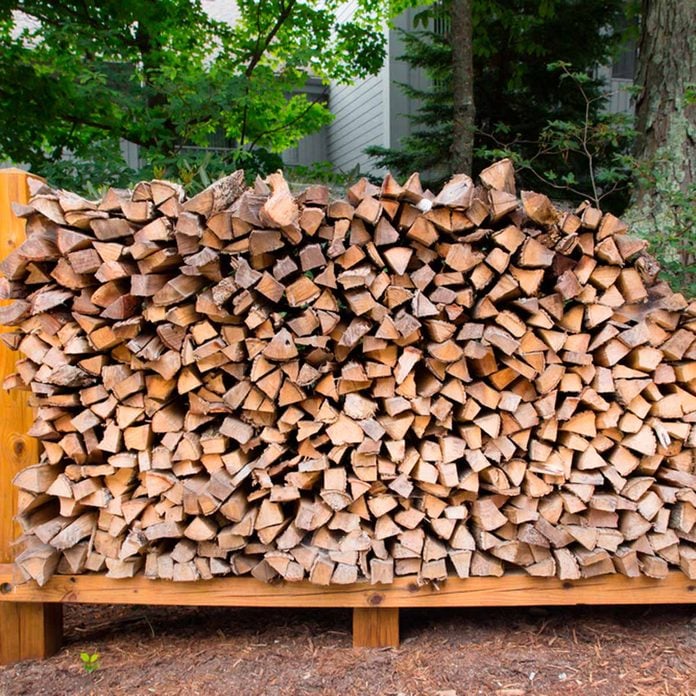
How Much Space Do I Have To Store the Wood?
Before deciding where to buy firewood or how much to get, figure out where you’ll store it. You may be tempted into buying firewood in bulk to get a better deal and to have enough to last forever, but be realistic about how much firewood you need and how much space you have for storage.
Besides making sure you have room to store the wood, remember that it’s best to store firewood with plenty of space between the logs to allow drying and prevent rotting. And don’t position the firewood right next to your house or garage — think mice, insects and fire danger. A firewood rack can help.
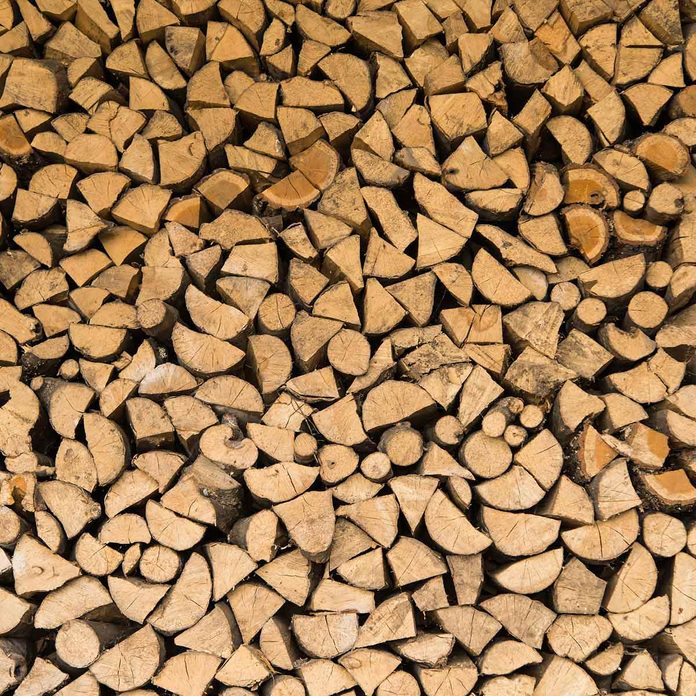
A Cord Is a Cord
Firewood is sold by the cord. A cord is a stack of wood 8-ft. long x 4-ft. deep x 4-ft. high, or roughly 128 cubic feet. A face cord (a.k.a. a fireplace cord or rick) is 1/3 of a full cord, meaning a single stack of firewood measuring 4-ft. high x 4-ft. long.
Plus, here’s how to buy rough sawn lumber.
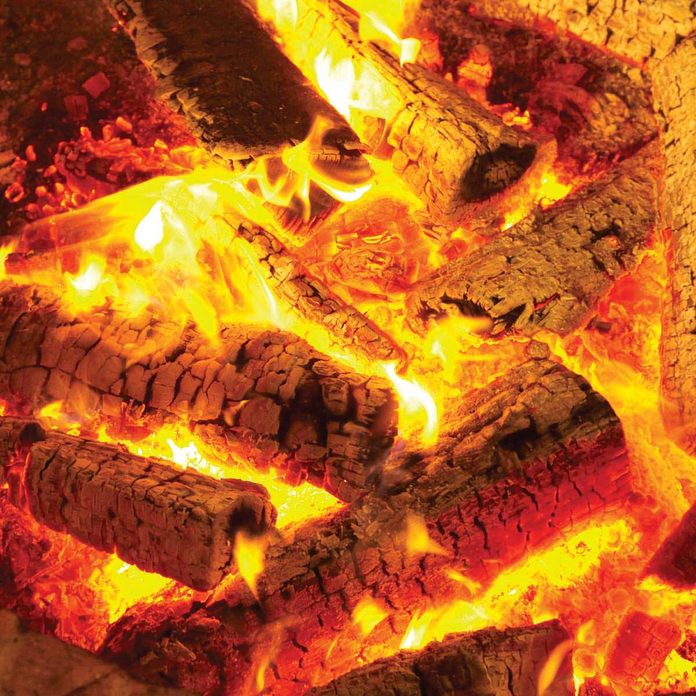
Determine What Kind of Wood Is Best for Your Fires
If you’re going to burn the wood in an outdoor fire pit, it doesn’t matter much what type of wood it is. Many people use whatever they have on hand, without worrying about hardwood vs. softwood. However, for an indoor fireplace or wood stove, you should buy dense firewood like oak and maple. Softer wood, such as poplar, burns faster and doesn’t make long-lasting coals. Ash, though not as dense as oak and maple, also burns well.
Maple and fruitwoods are great for cooking fires because they infuse the food with a pleasant flavor. As far as firewood not to burn, stay away from resinous wood such as pine and spruce for indoor fires. When burned, they create creosote that can cause a chimney fire.
Other woods to avoid: pressure-treated, painted, stained and manufactured wood, such as plywood and particleboard. These woods can release toxic gases.
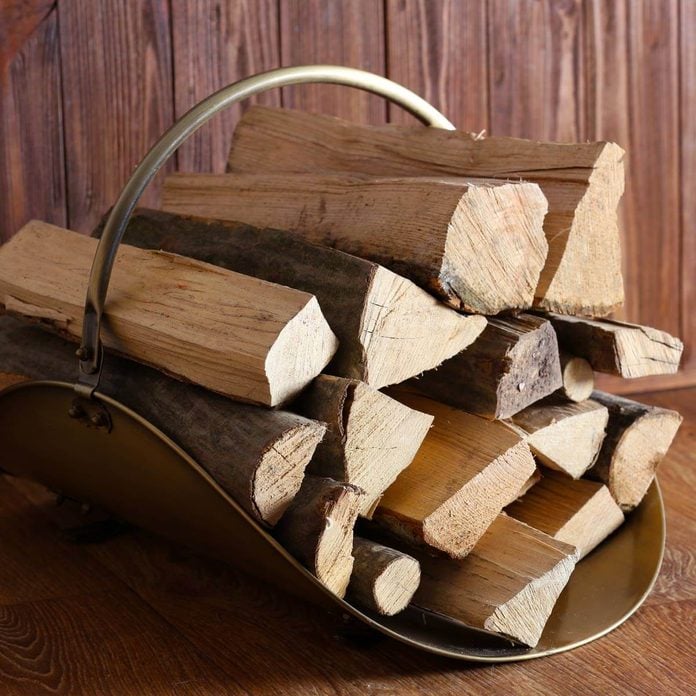
Only Burn Seasoned Wood
Recently harvested (green) wood is heavy due to its high moisture content. If you are buying green firewood, plan to let it season (dry out) for approximately nine months. The timing depends on the humidity in your area. Seasoned wood is dry to the touch, with cracks in the ends and loose bark. Before you burn learn these crucial fire safety tips.
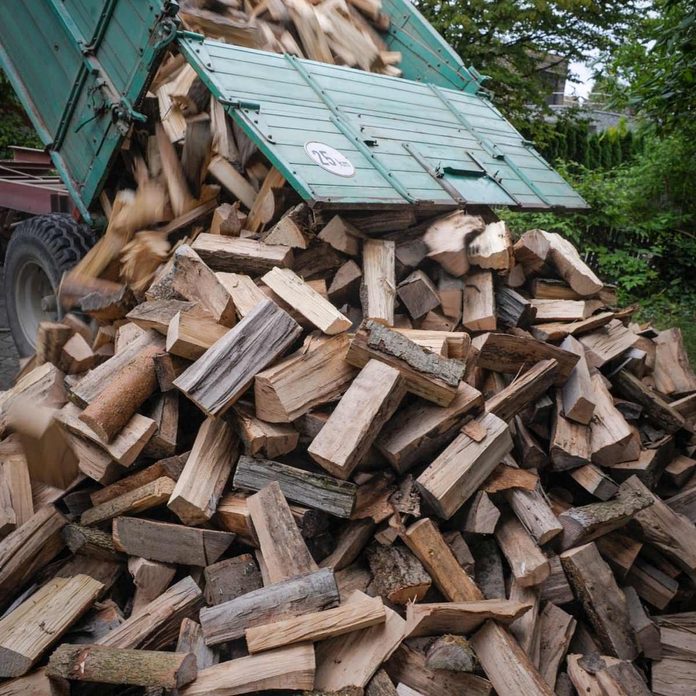
Ask Questions
Find out from the firewood seller if the wood comes as split logs. If it doesn’t, ask how much more it costs to split it or you’ll have to learn how to split firewood yourself, which you probably don’t want to do. Ask the approximate size of the logs so you can make sure they’ll fit your fireplace or stove.
Most firewood is about 16 inches long, but it’s worth asking to make sure the logs will work for you without additional chopping. Be sure to ask these questions when buying firewood:
- Is firewood delivery available? If so, is there an extra charge?
- Will they stack the wood where you want to store it or will they leave it in a pile on your driveway?
- If you’re picking it up, will they help you load up the wood? (A typical eight-foot truck bed will hold about 1/3 of a cord if the wood is piled loosely, or 2/3 of a cord if it’s tightly stacked.)
- And, of course, ask the price and negotiate. Ask around first to determine the going rate for firewood in your area. Once you find out the price, you can haggle over delivery charges, etc. You don’t like to haggle? That’s okay, too.
Plus, here are ten things you should never burn in your fireplace.
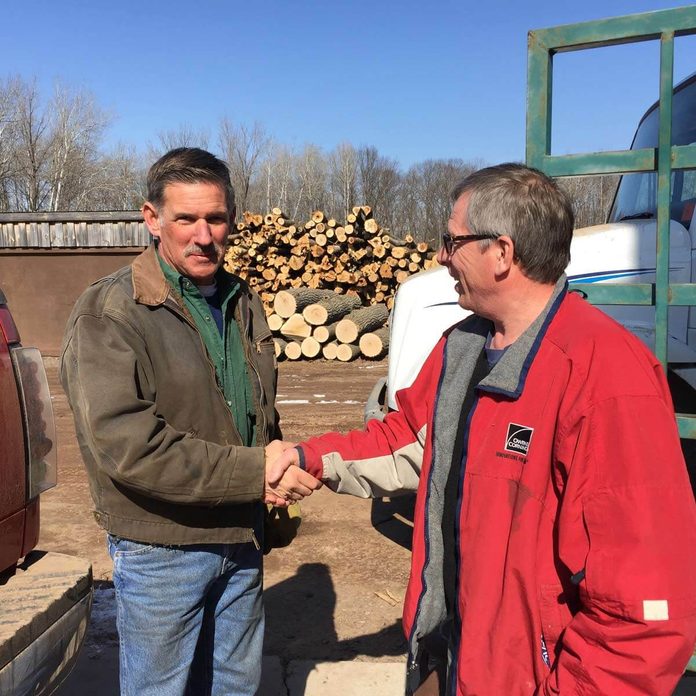
Finders Keepers
Once you find a good, trustworthy firewood source, build a relationship with them. Shady firewood dealers are out there, so know what you want and ask the right questions.
And if you follow this guide, you can develop a reliable firewood source that keeps your fires burning for years to come.



















